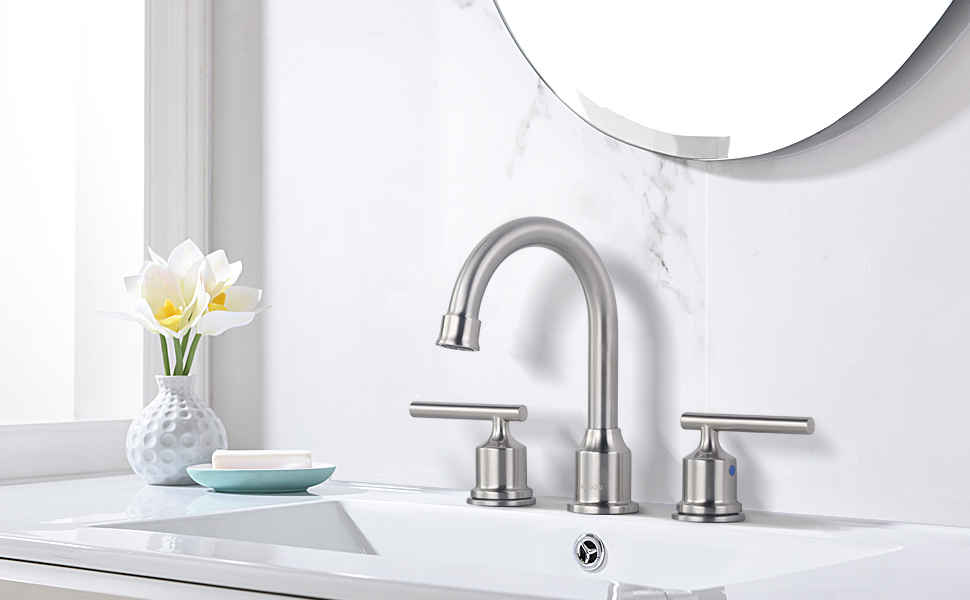
When it comes to selecting a faucet for your kitchen or bathroom, the choice between brass and stainless steel can be a pivotal decision. Both materials offer unique advantages and characteristics, making them popular choices among homeowners and designers. In this comprehensive comparison, we delve into the differences, benefits, and considerations of brass and stainless steel faucets to help you make an informed decision.
Brass Faucets: Timeless Elegance and Durability
Brass faucets exude timeless elegance and charm, making them a popular choice for traditional and transitional-style interiors. Brass is a metal alloy primarily composed of copper and zinc, known for its warm, golden hue and inherent antimicrobial properties. Key advantages of brass faucets include:
- Durability: Brass is renowned for its exceptional durability and resistance to corrosion, making it well-suited for high-traffic areas such as kitchens and bathrooms. Brass faucets can withstand prolonged exposure to moisture, temperature fluctuations, and daily wear and tear, ensuring long-lasting performance and aesthetics.
- Timeless Aesthetic: Brass faucets add a touch of sophistication and warmth to any space, enhancing the overall ambiance and visual appeal. Whether you prefer a classic, vintage-inspired design or a more contemporary look, brass faucets complement a wide range of interior styles, from traditional to modern.
- Low Maintenance: Brass faucets require minimal maintenance to retain their luster and beauty. Routine cleaning with a mild soap solution and soft cloth is usually sufficient to remove dirt, grime, and water spots, maintaining the pristine appearance of the faucet for years to come.
Stainless Steel Faucets: Modern Simplicity and Versatility
Stainless steel faucets offer a sleek, contemporary aesthetic and exceptional functionality, making them a popular choice for modern and minimalist interiors. Stainless steel is a durable and hygienic material composed primarily of iron, chromium, and nickel. Key advantages of stainless steel faucets include:
- Corrosion Resistance: Stainless steel is highly resistant to corrosion, rust, and staining, making it an ideal choice for wet environments such as kitchens and bathrooms. Stainless steel faucets can withstand exposure to water, chemicals, and harsh cleaning agents without compromising their integrity or appearance.
- Modern Design: Stainless steel faucets boast a clean, minimalist design that complements contemporary and industrial-style interiors. The sleek, matte finish of stainless steel adds a touch of sophistication and modernity to any space, creating a cohesive and stylish aesthetic.
- Hygienic Properties: Stainless steel is inherently hygienic and non-porous, making it resistant to bacterial growth and easy to clean. Stainless steel faucets are an excellent choice for environments where cleanliness and sanitation are paramount, such as healthcare facilities and commercial settings.
Considerations for Choosing Between Brass and Stainless Steel Faucets:
- Design Preference: Your design aesthetic and the overall style of your space will influence the choice between brass and stainless steel faucets. Consider whether you prefer a classic, traditional look with warm, golden tones (brass) or a sleek, modern appearance with a matte finish (stainless steel).
- Budget: Brass faucets tend to be more expensive than stainless steel faucets due to the cost of materials and manufacturing processes. Consider your budget and investment priorities when selecting the right faucet for your home.
- Maintenance Requirements: While both brass and stainless steel faucets are relatively low-maintenance, brass faucets may require periodic polishing to maintain their shine and prevent tarnishing. Stainless steel faucets are more resistant to tarnishing and staining, requiring minimal upkeep.
- Compatibility with Existing Fixtures: Consider the existing fixtures and hardware in your kitchen or bathroom when choosing between brass and stainless steel faucets. Opt for a finish that complements your cabinetry, countertops, and other fixtures for a cohesive and coordinated look.
Conclusion:
In conclusion, the choice between brass and stainless steel faucets ultimately depends on your design preferences, budget, and functional requirements. Brass faucets offer timeless elegance, durability, and warmth, while stainless steel faucets boast modern simplicity, corrosion resistance, and hygienic properties.
Whether you prefer the classic charm of brass or the contemporary appeal of stainless steel, both materials offer unique advantages and aesthetic qualities that can enhance the beauty and functionality of your kitchen or bathroom. By considering your specific needs and preferences, you can select the perfect faucet to complement your space and reflect your personal style.
 iVIGA Faucet Online Shop
iVIGA Faucet Online Shop
